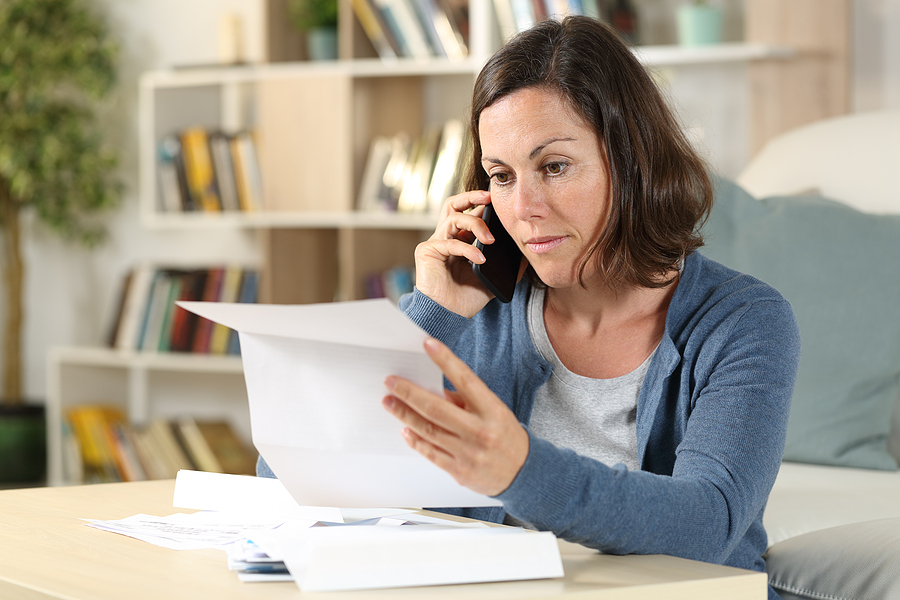
What Happens When Your Checking Account Goes Negative and What Steps Should You Take?
If you get into a difficult financial pinch, you may spend more money than you have and take your checking account below a zero balance. This might be a complete accident based on unfortunate timing—for instance when your account is drafted for a credit card bill or other expense before your paycheck comes in. Or, it may be the sign of a more serious financial issue that you need to address.
If you find yourself with a dangerously low checking account balance here is what you need to know.
Overdraft vs. Non-sufficient Funds
The first important thing to understand in this situation is the overdraft arrangement you have with your bank. An overdraft occurs when there is a transaction against your account that takes the balance below zero. This could be caused by a number of events: a check you wrote, a charge you made with your debit card, an automatic payment that processed, or your attempt to withdraw cash at an ATM. Importantly, banks may treat different transactions differently. ATM and one-time debit card transactions are subject to different rules than checks and ACH transactions.
When a charge is made against your account that would take it to a negative balance, there are three potential outcomes.
First, your bank may foot the bill on your behalf and charge you an overdraft fee. This happens when you have “overdraft coverage.” You have to opt in to overdraft coverage for ATM and debit card transactions, but your bank may provide the coverage automatically on other transactions. Some banks will continue charging you for any additional transactions you make while the account is negative. These fees are often pretty steep and will add up quickly if you have to pay multiple times.
Second, funds from another account you own may be used to cover the charge. This happens if you have opted in to “overdraft protection.” If so, you will have linked another account to your checking account to serve as a backup. When the primary account reaches zero, funds from the other account are used (transferred) to cover the amount. You will usually pay a small fee for the transfer.
Ideally, your linked account would be a savings account or another checking account. You typically want to avoid using a credit card as your backup account, because it will likely be processed as a cash advance.
Third, if you do not have overdraft coverage or protection and your bank decides not to foot the bill, it will refuse the transaction. When it is declines the charge, the reason is called Nonsufficient Funds (NSF) or “insufficient funds.” You will owe an “NSF fee” in most cases, and often this fee is the same amount that the bank charges for an overdraft fee.
What to Do
If you have overdrawn your account or have insufficient funds, here are steps to consider taking.
Transfer Money
If you have funds to cover the expense, or just to add cushion to your account, you might make a transfer. A quick transfer can help prevent multiple overdrafts in a short time period. It can also allow you to reinitiate a charge from a merchant that previously failed due to insufficient funds.
Ask for Waived Fees
If you’re charged an overdraft or NSF fee, contact your bank and ask them to waive it. It can never hurt to ask, and if you have not had this problem before, the bank may be willing to waive the fee as a one-time courtesy.
Pay Your Fees
Alternatively, if you can’t get rid of the fee then be sure to pay it. Failure to pay an overdraft fee could lead to a number of negative consequences. The bank could close your account, take collection or other legal action against you, and even report your failure to pay, which may make it difficult to open checking accounts in the future. Note: typically, your bank won’t close your account right away after an overdraft, so you have some time to sort this out. But, try to pay the fee as quickly as you can.
Pay Third Parties and Avoid Legal Problems
If a merchant or other third party tried to make a charge against your account, either from a check you wrote or an ACH, and didn’t get paid, that’s a problem. This would occur in the “NSF” scenario mentioned above. In that case, not only do you need to settle up with the bank to pay the NSF fee, but you also need to settle up with the third party. You owe them money and could face adverse consequences if you do not pay them. It is usually best to resolve this as quickly and amicably as possible. Simply contact the merchant, explain the mistake, and submit the necessary payment.
How to Avoid this in the Future
There are a few basic strategies and habits you can use to keep your checking account at a positive balance moving forward. Here are a few:
Sign up to receive text or email alerts when your balance is low.
Check your bank account regularly and review your statements each month.
Review the dates that automatic payments are withdrawn compared to the dates you are paid. Make adjustments to automatic withdrawal dates if necessary.
Revisit your budget to make sure spending categories are not consistently exceeding what you can afford.
Build an emergency fund.
Consider whether overdraft protection and coverage makes sense for you. If they do, ensure that your backup account has a sufficient cushion.
Moving Forward
Having your bank account go to a negative balance is certainly not an ideal situation, but it is also not the end of the world. If this happens to you, be sure to resolve it as quickly as possible and then make a plan to keep it from happening again.
Our credit counselors can help you make a budget and financial game plan to help you meet all of your financial obligations. You can get started today with a free counseling session.
The post What Happens When Your Checking Account Goes Negative and What Steps Should You Take? appeared first on NFCC.
Read more: nfcc.org







